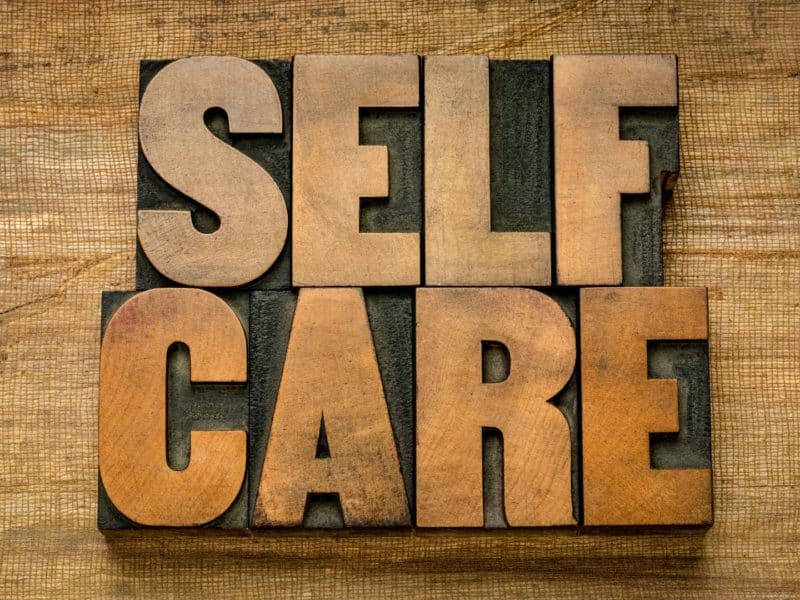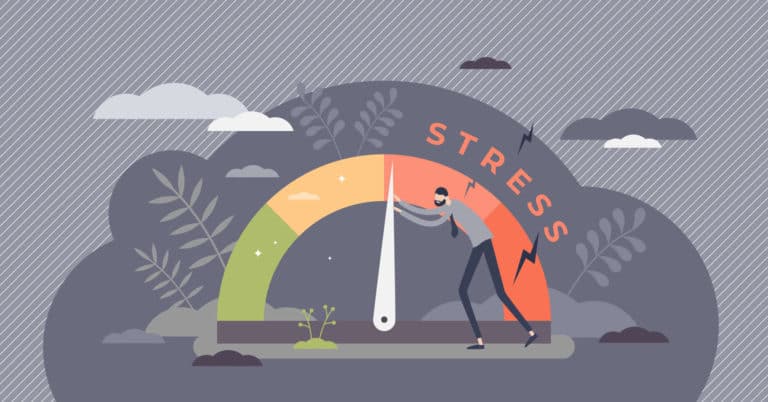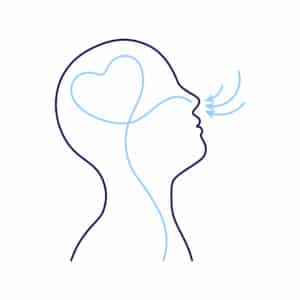Self-Care: How to Implement after Trauma

Self-Care and Trauma
Self-care implementation after trauma is important. No matter what you call it: trauma, stress, first-world issues; we all have it. Our brains and bodies respond to stress physically, emotionally, and mentally. Luckily, we are built to release these effects. What can you do to help yourself lead a life where you are mindfully in control, not stressed out and overwhelmed? Let’s check out the cause and the cure.
Your brain’s number one function is keeping you alive.
When you are stressed, your brain responds to perceived danger in several ways. Your emotions may signal fear, anger, dread, excitement. Your brain switches from thoughtful to alert. Your body responds by speeding up your heartbeat, gathering your breath, tensing your muscles. All these responses are designed to work together to help you get out of harm’s way—by running, fighting, freezing, submitting, or crying out for help.
After you get out of danger to safety, your system is designed to release, relax, and go back to a mindful, aware, thinking state of being.
When you are out of danger and back to safety, with the support of helpers or just by yourself, you return to calm. The journey back to calm involves releasing all the heightened responses to stress. Imagine how a baby or small child responds after something scary or hurtful. First, they might cry, sweat, talk loudly, or move in an agitated way. A tantrum is one example of a stress response—a physical and emotional reaction to perceived danger. Another child might cry and huddle close to their caregiver, seeking warmth and love and reassurance that all is well and safe again. The child processes their emotions, their body slowly calms, and they fall asleep, allowing the body and brain to complete the repair process. This process is also how we begin the foundations of self-care. It is so important to have parental help shifting from a state of excitement/stress to a calm state and begin practicing self-regulation from an early age. It takes years of experience and help to be effective at self-care.
We don’t always get to process the stress out of our systems completely. There might not be time, or a safe space, or caring helpers to facilitate self-care.
When that happens, we can wind up with stuck places: emotional and physical responses to current events that seem out of proportion. Have you ever smelled something that took you back to another place and time? Have you ever had a reaction of irritation, fear, or disgust to something that seemed unimportant? Do you have aches and pains that seem unrelated to your current activities? These can be examples of stuck places: stressors stored in the brain and body that haven’t yet been released and repaired.
Everybody is carrying stress, even just from living in the world. How do you manage it? How do you release it? Use the Fundamentals of self-care: Sleep, Exercise, Nutrition, Hydration.

Successful sports coaches know the value of Fundamentals: the basic skills that equip athletes to perform at their best. As human beings, our Fundamentals of self-care help our bodies and brains to work, repair, and serve our needs. Sleep, Exercise, Nutrition, and Hydration help our brains and bodies release the stressors and return to a resilient, present-focused, self-controlled state of being.
Sleep, the great healer. Create a sleep routine to help your brain and body relax, repair, rejuvenate.
Do you sleep like a baby—wake up every few hours and cry? Wish that was “just kidding.” Experts recommend 7-9 hours of sleep per night, including deep sleep and rapid eye movement (REM) dream sleep. What gets in your way? Do you have a hard time falling asleep, staying asleep, or just getting enough time to sleep?
Quick hacks:
- No caffeine after lunchtime, cut back (or out!) alcohol in the evening.
- Implement the exercise, nutrition, and hydration ideas below.
- Turn off the blue-light screens 1-2 hours before bedtime and start winding down with a hot bath, a calming stretch routine, a soothing book or paper puzzle, or an app with soothing stories or meditations.
- Keep your schedule as consistent as possible day-to-day, and allow yourself time to readjust after travel, sickness, or other schedule disruptions.
- Check out the tips in The Morning Mind by Dr. Rob Carter, PhD, MPH, Dr. Kirti Salwe Carter, MBBS, MPH.
How can you handle nighttime wakeups, bad dreams, or other sleep disruptors?

New parents: work out a partnership to handle the baby! It will save your sleep and your marriage. Check out the book by famous couple therapists Drs. John and Julie Gottman, And Baby Makes Three.
Bad dreams or waking up feeling tense or worried?
- Bring yourself back into the present: get out of bed, go into a different room, use the bathroom, get a drink of water, look out the window.
- Don’t turn on bright lights, don’t go to the refrigerator, don’t turn on the TV or check your phone or the clock—all those things will just wake you up more.
- Instead, practice a basic breathing exercise (see below), move slowly or sit in a different area, and change your mental focus: recite the alphabet, count in a different language or backwards.
- Practice muscle relaxation: clench the muscles and release them, working up your body from your feet to your head.
- Relax your body and distract your mind. When the relaxation and present-focus returns, go quietly back to bed, focus on your breathing, and allow yourself to gently drift back to sleep.
Exercise: the magic pill. But how do you get it into your self-care plan on a regular basis? Beyond the gym:
Human beings are built to move, work, play, using our bodies throughout the day. 21st century life has drained a lot of movement out of our daily lives and we are feeling the effects, especially after pandemic stay-at-home orders. Now we can get out and move, so let’s do it! Take the stairs, park further away, push your own grocery store cart, walk the dog, play with the kids, dance, bike, or swim and incorporate a bit of each into a longer term self-care plan. What do you like to do? You don’t actually have to work up a sweat for exercise to be a part of your self-care plan. Take the opportunities that pop up in your day and move!
Nutrition: Veggies are your friends, and can be a very tasty part of self-care, with or without ranch dressing!
You already know it—fresh fruits and vegetables, whole grains, lean meat and fish. That’s not really drive-through fare. Don’t worry about having a perfect meal plan—focus on including the healthy stuff when you can, and enjoy the treats, slowly, and mindfully, when you want to indulge. Mindfully eating food that makes your body feel good is healthy? Who knew? For more info and ideas, check out the book/audio, Intuitive Eating: A Revolutionary Anti-Diet Approach, by Evelyn Tribole, MS, RDN, CEDRD-S, and Elyse Resch, MS, RDN, CEDRD-S, FAND.
Hydration: Drink your water! Or coffee, or soup, or juicy watermelon.
Our bodies need water, and we droop like sad flowers when we don’t get enough. Feeling hungry-ish, or irritable, or a mid-afternoon slump? You might be dehydrated. Get something to drink! Water is the best and sometimes the easiest. Tea and coffee have antioxidants and caffeine to give you a boost—just allow your body time to process the caffeine before bedtime! Remember that sodas and fruit drinks can have added sugar, dyes, and chemicals, so read the labels when you make your choice. If you’re not used to drinking water, start including a glass with your meals, and maybe a bottle of water between mugs of coffee to work it into your routine.
The fundamentals of recovery
Do you want more? Therapy with EMDR and IFS work to help you release the stuck places from your past stressors. Contact us at The Pragmatic Therapist (https://thepragmatictherapist.com/) to see how we can help process trauma and stress and develop a health self-care plan.
Extra: Breathing Exercises!

- 3-5 Breathing:
- Breathe in through your nose for a slow count of 3.
- Breathe out through your mouth for a slow count of 5.
- Repeat.
- Repeat.
- Breathe normally and scan your body for any sensations. You might or might not notice anything.
- 4 Square Breathing:
- Breathe in for a slow count of 4. Hold your breath for a slow count of 4. Breathe out for a slow count of 4. Hold your breath for a slow count of 4.
- Repeat the breathing cycle until you feel your heartbeat slow down or steady and your muscles relax.
It can be helpful to image a square, box, or window as you breathe: breathe in along one side, hold along the next side, breathe out along the next side, hold back to the start.
Resources recommended in this article:
- The Morning Mind by Dr. Rob Carter, PhD, MPH, Dr. Kirti Salwe Carter, MBBS, MPH
- And Baby Makes Three by Drs. John and Julie Gottman
- Intuitive Eating: A Revolutionary Anti-Diet Approach by Evelyn Tribole, MS, RDN, CEDRD-S, and Elyse Resch, MS, RDN, CEDRD-S, FAND.
